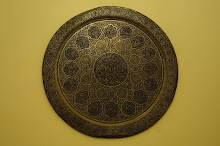The last thing anyone would expect to find in one of the most isolated outposts of humanity is a famous man.
Meeting “Mr. Socks” - or “Dr. Socks” as he prefers to be called - at the edge of a palm grove in Egypt’s smallest and most remote desert oasis was a lesson that the affliction of human fame can even extend to those places shrouded in virtual obscurity.
“Everybody knows me,” says Gaafar Abdullah, the 39 year-old Bedouin who earned his catchy “Socks” nickname by virtue of his longstanding business of knitting and selling camel wool apparel - socks, scarves, gloves, and hats. “My name is on the Internet and in the guidebooks. I am a very famous man.”
He is, as it turns out, a kind of local celebrity and claims that he is also known to many people worldwide who, by some whim or chance have happened upon a tiny swath of green, found deep in an ocean of desolation.
Located in a depression several hundred kilometers southwest of Cairo, and at the center of Egypt’s unforgiving Western Desert, is Farafra Oasis – one of the smallest, most isolated and least visited parts of inhabited Egypt. Palm forests, sulfurous hot springs, Bedouin farmers and an enchanting air of calm, bordering on inertia, characterizes this patchwork of cultivated lands. Farafra is one of a string of desert oases linked by road that fan in an arc westward from the Nile, part of what Egyptian officials began referring to in the 1950’s as “The New Valley.”

Situated closer to Libya than to the Nile Valley, Farafra is considered by many Egyptians - most of whom have never been there - as the proverbial end-of-the-line. Even local desert aficionados express dismay at Farafra’s bewilderingly small size and isolation, to the point where some of them speak of the oasis a virtual non-entity.
But in spite of its puny size and position, Farafra has always played an important role in the history of the Western Desert. Its life-giving wells, located further west than all others, have made the oasis a necessary way station for caravans and travellers criss-crossing the waterless wastes of the Sahara. The Greek historian Herodotus wrote that the Lost Army of the Persian King Cambyses departed from near Farafra on its famous and ill-fated march across the Great Sand Sea to distant Siwa Oasis in the 6th century BC. The Persians were later followed by the Romans and Byzantines who both occupied distant outposts here. In 19th and 20th centuries, desert explorers - including an elite unit of the British Special Forces during World War Two - used the oasis as a platform in which to launch expeditions and raids deep into the Sahara.
With its long history and periodic entanglements in the affairs of empires, Farafra has surprisingly little to show in terms of relics or material culture. Its main archaeological vestige is the centuries-old and highly dilapidated mud town of “Qasr al-Farafra”, which remains today partially inhabited and surrounded by a sleepy and lackluster village of small concrete tenements of the same name. Dust-blown and exuding an air of abandonment, Farafra’s main town resides in another dimension, located somewhere between the outskirts of modernity and the metaphysical void. But therein resides part of its charm.

Flanking the old town to its immediate south and west is one of several large tracts of cultivated land in Farafra bursting with crops and towering date palms – the real heart and soul of the oasis. One can lose themselves for hours exploring these idyllic blooms of green that locals refer to in English as “the gardens”. The area teems with plants, insects, animals, and thermal springs, and is caressed by draughts of desert air that play to a stillness that runs very deep. The almost total dearth of human activity here, save for the odd farmer or hot springs bather, gives the area a sense of timelessness found in few other places.
Farafra’s calm and simplicity are profoundly soothing. And for residents of the oasis, despite the isolation and material deprivations that they must endure, it makes life virtually impossible for them anywhere else.
 “I can’t be away for more than a few days,” says Dr. Socks, as he stops to wash his hands and face at a hot spring. “Even going to the other oases is a very big trip for me. I don’t feel at ease in these places.”
“I can’t be away for more than a few days,” says Dr. Socks, as he stops to wash his hands and face at a hot spring. “Even going to the other oases is a very big trip for me. I don’t feel at ease in these places.”Stepping out of the palm groves and into the surrounding desert, one is reminded of the extent of Farafra’s isolation. A short journey in any direction from the oasis will bring one into contact with some of the most pristine, dramatic and sometimes unusual desert landscapes on the planet. Farafra sits at the cusp of several unique and converging desertscapes, including the White Desert, the Black Desert and the Great Sand Sea - one of the largest sand dune fields on Earth. Because of this, Farafra remains one of the preferred embarkation points for travelers looking to explore the far recesses of the Egyptian Sahara.
The oasis itself, however, tends to be overlooked by visitors, who, with a little extra time and effort, might discover for themselves a hidden hot spring, a tranquil palm grove, or even a famous man.

A version of this article appeared in the March 7, 2009 edition of The National.














No comments:
Post a Comment